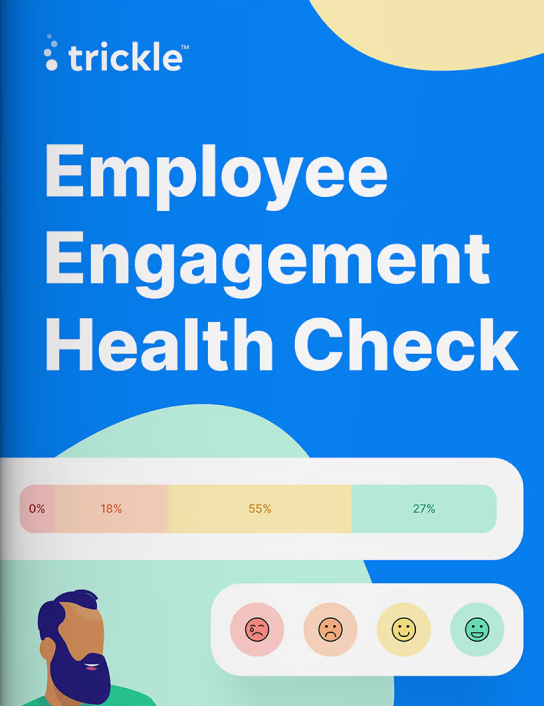How well does your company engage its employees?
Take your health check and find out.


This week is International Stress Awareness Week – a global event that started in 2018, focusing on stress management and campaigning against the stigma too long associated with stress and mental health issues. But as our CEO Paul Reid explains, there are many ways of successfully managing stress in the workplace before it ever becomes too much of an issue.
A little bit of stress can sometimes be a good thing. It can get us motivated enough to get things done. We all know someone who needs a looming deadline to spur them into action – and it can increase alertness, performance, and improve memory.
However, there’s a fine line between manageable and harmful stress, and it is so easy to stumble across that, sometimes without even realising.
When you are stressed, your body releases hormones like adrenaline and cortisol to help you deal with pressure or threats. These hormone levels then return to normal when the threat has passed.
But sometimes, when the pressure doesn’t pass your body doesn’t get a rest from these hormones. And if stress lasts for a long time, it can trigger bigger problems like anxiety and depression, which can often lead to long-term absence.
This makes it vital for managers to spot the early signs of workplace stress in their people and intervene supportively before the situation potentially spins out of control.
Recognising the signs can involve becoming a bit of a ‘stress detective’, because it’s hard for people to admit they are stressed. Some see it as a failure on their part, worry it will make their bosses think they are incapable of doing their jobs effectively, or mean they could be passed over for promotion.
According to a recent survey by mental health charity Mind, one in four UK adults whose mental health worsened for the first time during the pandemic have yet to tell anyone about it – demonstrating the stigma that still surrounds the issue.
Other data from the Chartered Institute of Personnel Development found although 77% of workers believe their organisations do promote mental wellbeing, only half say their company can effectively spot and support a struggling employee.
So, what signs should managers look out for? According to Mind, a stressed worker will often be:
With more people working from home, these signs can sometimes be hard to detect. One way for leaders to spot emerging workplace stress is through platforms like Trickle, where workers are actively encouraged to voice their concerns digitally, in an employee-only space. Vitally, due to the ongoing stigma around workplace stress, they can do this anonymously.
Trickle’s Confide feature gives your people an anonymous way to raise a private dialogue to seek direct support with their stress levels, which they may feel uncomfortable about raising in person.
The How Was Your Day feature does exactly what it says on the tin – asks your workforce a simple question which can give a snapshot of the mood across your organisation on any given day. Employees can quickly share how they feel and if they wish, also explain why.
Asking your people regular questions using Trickle’s MoodSense can also help leaders recognise the early signs of burnout.
How you phrase questions is important; if you ask an employee if they are feeling stressed, they will probably say ‘no’. If you ask them, ‘How can I help you?’ or ‘What can I do to make things easier for you?’, they are more likely to open up.
Keeping lines of communication open from the ground up, using a platform like Trickle, also allows employees to offer suggestions on how to reduce their stress. Leaders can then use these real-time insights to address workplace stressors and improve their wellbeing strategies.
Employers should create a proactive, open culture that encourages discussion of stress, and ensure staff are aware of any support on offer, such as employee assistance programmes, discounted gym memberships, mental health days, or subscriptions to wellness apps.
Knowing they will be helped rather than judged, encourages people to seek vital support sooner, with positive results for employee and employer alike.